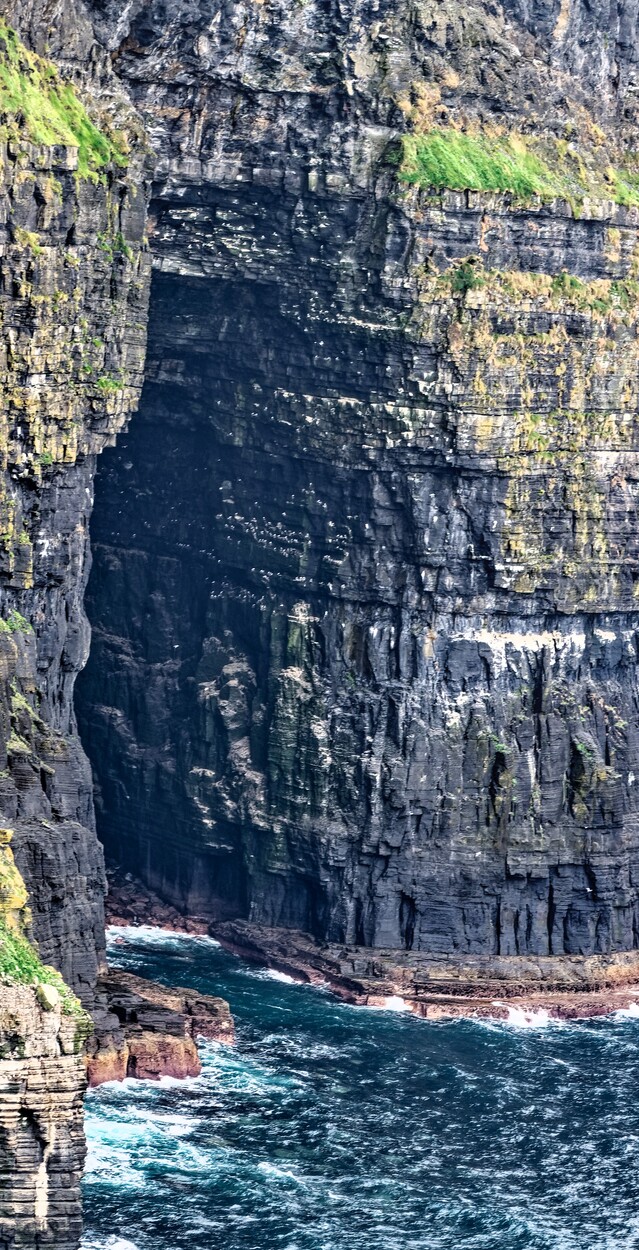The Cliffs of Moher, renowned for their breathtaking beauty, also offer an exhilarating big wave surfing experience. While not a traditional surf spot, nearby beaches like Lahinch provide world-class waves for thrill-seeking surfers. Winter months bring massive swells, attracting experienced riders from around the globe. This guide explores the unique challenges and rewards of big wave surfing near the Cliffs of Moher, including safety tips, best seasons, and local surf schools.
What Are the Current Surf Conditions at Cliffs of Moher?

While the Cliffs of Moher themselves are not a surfing location, nearby spots like Lahinch offer excellent surfing opportunities. Here’s what you need to know about the current conditions:
Wave Height and Swell Direction
- Wave heights typically range from 2-5 meters
- Swells often come from the west or northwest
Tide Information
- Lower tides: Produce steeper, faster waves
- Higher tides: Result in fuller, more manageable waves
Wind Conditions
- Offshore winds: Ideal for surfing, creating clean wave faces
- Onshore winds: Can create choppy conditions
It’s crucial to check reliable surf forecasts before heading out. Websites like Magicseaweed or Surfline provide detailed reports for nearby surf spots.
When Is the Best Time for Big Wave Surfing Near Cliffs of Moher?

The optimal time for big wave surfing near the Cliffs of Moher depends on several factors:
Seasonal Patterns
- Winter (October to March)
- Largest swells due to Atlantic storms
- Ideal for experienced surfers
-
Harsh conditions with cold water and strong winds
-
Autumn and Spring
- More manageable wave sizes
- Generally better weather than winter
-
Suitable for intermediate to advanced surfers
-
Summer
- Smaller waves, less consistent
- Warmer weather and water temperatures
- Better for beginners or those seeking calmer conditions
Optimal Months Table
| Month | Wave Size | Consistency | Water Temperature | Crowd Level |
|---|---|---|---|---|
| January | Large | High | Very Cold | Low |
| April | Medium | Medium | Cold | Medium |
| July | Small | Low | Cool | High |
| October | Large | High | Cold | Medium |
What Safety Precautions Should Big Wave Surfers Take?
Safety is paramount when tackling big waves near the Cliffs of Moher. Here are essential precautions:
Local Hazards
- Strong currents and riptides
- Rocky coastline
- Cold water (risk of hypothermia)
Recommended Gear
- Wetsuit (5/4mm thickness for winter)
- Booties and gloves
- Leash
- First aid kit
- Big wave surfboard (gun or semi-gun shape)
Emergency Preparedness
- Know the emergency numbers (Irish Coast Guard: 112 or 999)
- Inform someone on land about your surfing plans
- Check weather and surf forecasts before heading out
- Never surf alone in big wave conditions
How Can Beginners Prepare for Big Wave Surfing?
While big wave surfing is not for beginners, here’s how aspiring surfers can work towards this goal:
- Master the basics in smaller waves
- Gradually progress to larger waves
- Improve physical fitness (focus on cardio and strength training)
- Practice breath-holding techniques
- Study big wave surfing techniques and safety protocols
- Consider taking a big wave surfing course
What Are the Top Surf Spots Near Cliffs of Moher?
While the Cliffs themselves aren’t surfed, several nearby locations offer excellent waves:
- Lahinch
- Consistent beach break
- Suitable for all levels
-
Located about 12km from the Cliffs
-
Spanish Point
- Powerful reef break
- Best for intermediate to advanced surfers
-
Approximately 25km from the Cliffs
-
Doolin Point
- Right-hand reef break
- For experienced surfers only
- Closest to the Cliffs (about 8km)
Which Local Surf Schools Offer Big Wave Training?
Several surf schools in the area offer lessons and training:
Lahinch Surf School
- Contact: +353 65 708 1100
- Offers advanced courses and big wave workshops
- Experienced instructors with local knowledge
Ben’s Surf Clinic
- Contact: +353 87 960 9667
- Provides personalized coaching for advanced surfers
- Focuses on technique and safety in larger waves
What Equipment Is Essential for Big Wave Surfing?
Big wave surfing requires specialized equipment:
- Surfboard
- Gun or semi-gun shape
- Length: 7’6″ to 10’6″
-
Designed for speed and stability in large waves
-
Wetsuit
- 5/4mm thickness for Irish waters
-
Hooded for extra warmth
-
Safety Gear
- Inflatable vest
- Impact shorts
-
Helmet
-
Tow-in Equipment (for extreme conditions)
- Jet ski
- Tow rope
- Specialized tow board
How Does the Local Community View Big Wave Surfing?
The local community near the Cliffs of Moher has embraced big wave surfing:
- Economic boost from surf tourism
- Increased global recognition of the area’s surf potential
- Growing interest in water sports among locals
- Concerns about safety and environmental impact
Local initiatives focus on:
1. Promoting responsible surfing practices
2. Educating visitors about ocean safety
3. Preserving the natural beauty of the coastline
What Are the Environmental Considerations for Surfers?
Surfing near the Cliffs of Moher comes with environmental responsibilities:
- Respect marine life and habitats
- Avoid littering and remove any trash found
- Use eco-friendly surf wax and sunscreen
- Support local conservation efforts
- Be mindful of erosion on coastal paths
How Has Big Wave Surfing Evolved Near Cliffs of Moher?
The history of big wave surfing near the Cliffs of Moher is relatively recent:
- 1960s: Surfing introduced to Ireland
- 1990s: Growing interest in big wave spots along the west coast
- 2000s: International recognition of Ireland’s big wave potential
- 2010s: Advancements in wetsuit technology making winter surfing more accessible
- Present: Increasing number of local and international surfers tackling big waves in the area
